Inside Dubois-Dépraz, Module Specialist, and its New Integrated Chronograph
A look behind-the-scenes at one of the watch industry’s most prolific suppliers, along with all the details of its surprising new chronograph movement.

Operating somewhat anonymously within the watch industry, this company keeps its impressive client list confidential. Yet, if you are into watches, there’s a good chance the name Dubois-Dépraz will be familiar. That’s because it is one of the most prominent suppliers in the industry. The company has made a name for itself manufacturing parts and additional mechanisms (in particular chronographs and perpetual calendars) for some of the world’s most famous watch brands. Today, we take a closer look at this company – and a peek at its first integrated chronograph movement.
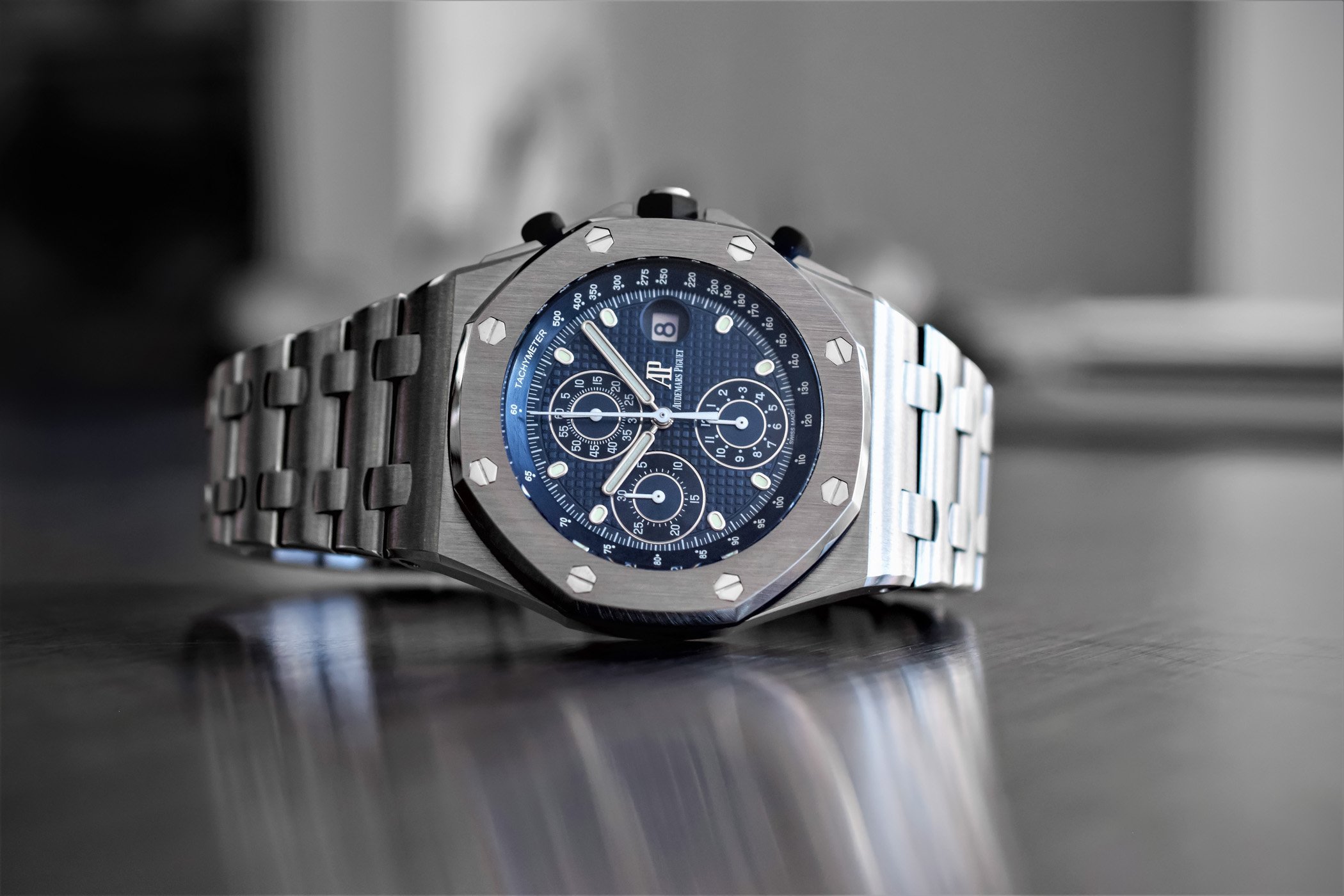
Modules…
There are essentially two ways of getting a complication into a watch. It can be an integrated construction or it can be a modular construction. With an integrated construction, the different functions are incorporated within the movement architecture. With a modular construction, the additional functions/indications are provided by a separate mechanism (i.e. a module) that is grafted onto a base movement, with the latter providing the basic timekeeping functionality.
The advantage of a module is that it is built separately and can be coupled with a variety of movements. It is generally more economical to produce and allows brands to use the module on top of an existing calibre. On the other hand, this extra layer means added thickness and other possible disadvantages, such as the positioning of the chronograph pushers or a date indication that is sometimes deeply recessed on the base calibre.
A BRIEF HISTORY OF DUBOIS-DEPRAZ
It all started over a century ago in the Vallée de Joux, the cradle of complication watchmaking… In 1901, Marcel Dépraz, who had been working for Aubert & Fils on their complication watches, created his own company. The Société Individuelle Marcel Dépraz soon specialized in chronographs, serving companies such as Breitling, Excelsior and Minerva. In 1910, a second entity was founded with Marius Guignard, his stepbrother, focusing on part manufacturing.
In the 1930s, Reynold Dubois, Marcel’s son-in-law, joined the company (the Dubois and Dépraz names would later be combined). In 1937, the calibre 48, a 13 ‘’’ 1⁄4 chronograph was presented. Over 3.5 million mechanisms would be delivered!
Among other highlights in the company’s history is the creation of the calibre 11. In the 1960s, four companies teamed up to create the first automatic chronograph: Heuer-Leonidas, Breitling, Büren and Dubois-Dépraz. The technical specifications were written by Gérald Dubois and Hans Kocher (Büren). The development based on a Büren micro-rotor movement and a Dubois-Dépraz chronograph module started in 1966. It would give birth to the famous ‘chronomatic’ calibre 11, one of the first automatic chronograph movements together with the Zenith El Primero and the Seiko 6139 (read our article about the history of the El Primero here). The calibre 11 would go on to power iconic Breitling and Heuer chronographs.
During the 1970s, new, more accurate quartz watches gained popularity, plunging the Swiss watch industry into a deep crisis. Dubois-Dépraz survived this difficult period by diversifying its activities (always in the field of micro-mechanics). But with the revival of the mechanical watch during the 1980s and 1990s, demand climbed fast. In particular, the creation of the chronograph module 2000 in the early 1980s marked a milestone in the company’s history. At the time very few mechanical chronographs were produced, and the DD 2000 provided an efficient solution to do so, coupled
either with ETA or manufacture movements.
Today, Dubois-Dépraz is managed by the fourth generation of the family. Pierre Dubois (the General Manager) joined his brother Jean-Philippe and Pascal at the helm of the company in 2017. About 380 employees are scattered across four different production sites. The three activities are: additional mechanism manufacturing; parts manufacturing, and; customized developments for third-parties. Although the production of parts is becoming increasingly important, the production of additional mechanisms remains the principal activity. Chronographs and perpetual calendars are the main products, but the company’s portfolio incorporates many different modules.
NEW INTEGRATED CHRONOGRAPH MOVEMENT – CALIBre 540
Exactly 50 years after the presentation of the calibre 11, Dubois-Dépraz unveils the calibre 540, a superb integrated fly-back chronograph movement. The chronograph is among the most complex mechanisms to design and manufacture. Very few makers manufacture chronograph movements, and there are few chronograph calibres available on the market. So, when we learnt that a chronograph specialist – one that had been manufacturing only modules for the past several decades – was presenting a new movement, it naturally caught our attention.
With the calibre 540, Dubois-Dépraz opted for a high-grade construction with column-wheel and horizontal clutch. All of its modules feature a vertical clutch design, but Dubois-Dépraz chose this traditional solution for its chronograph movement. It is paired with a shock-protection device efficient up to 1,500G. This 32mm x 6.60mm calibre allows for a large date indication that jumps instantaneously. The calibre 540 ticks at 28,800 vibrations per hour with an assortment coming from Nivarox. The power reserve is in excess of 72 hours. Naturally, different finishing options are available.
For more information, please visit www.dubois-depraz.biz.


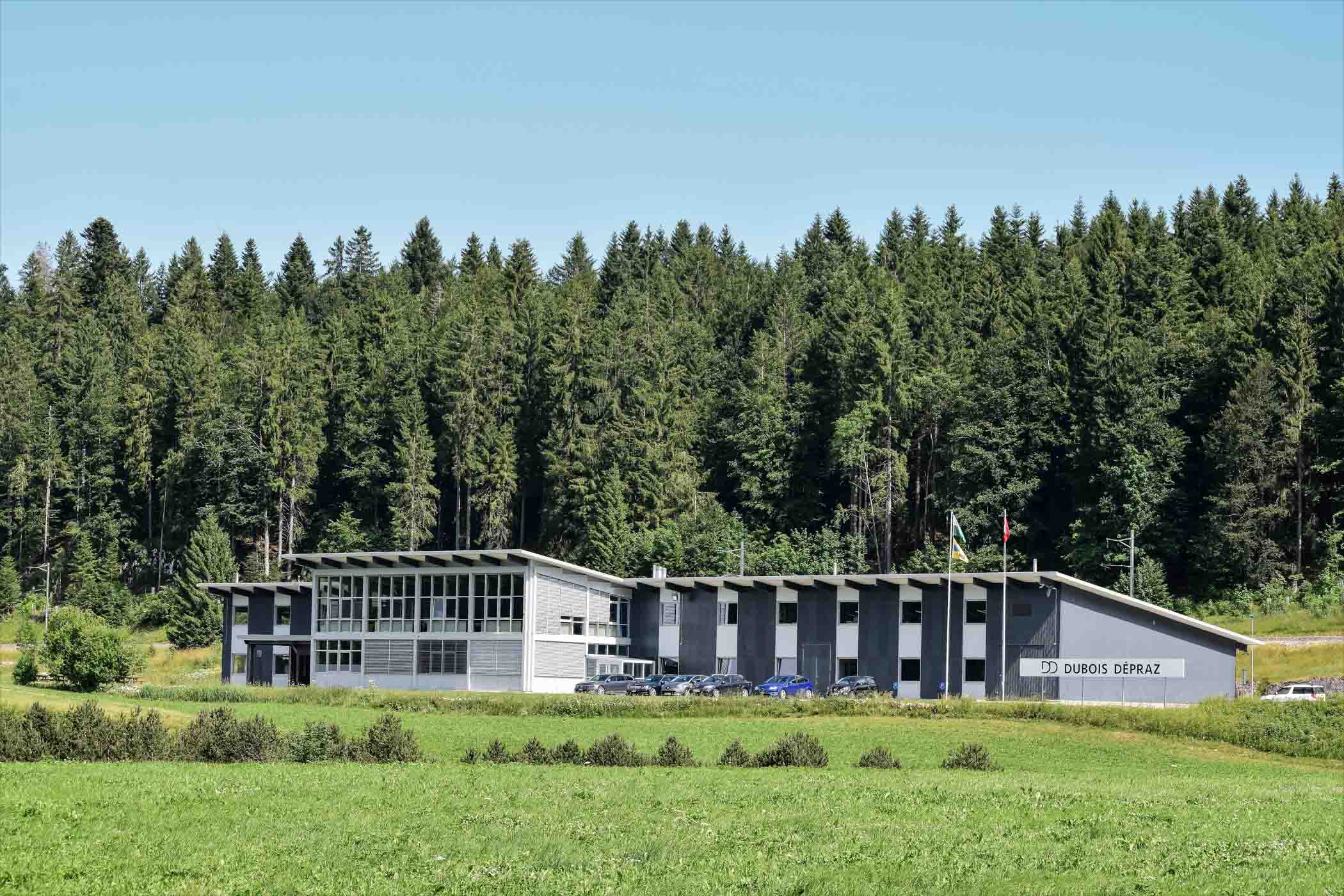
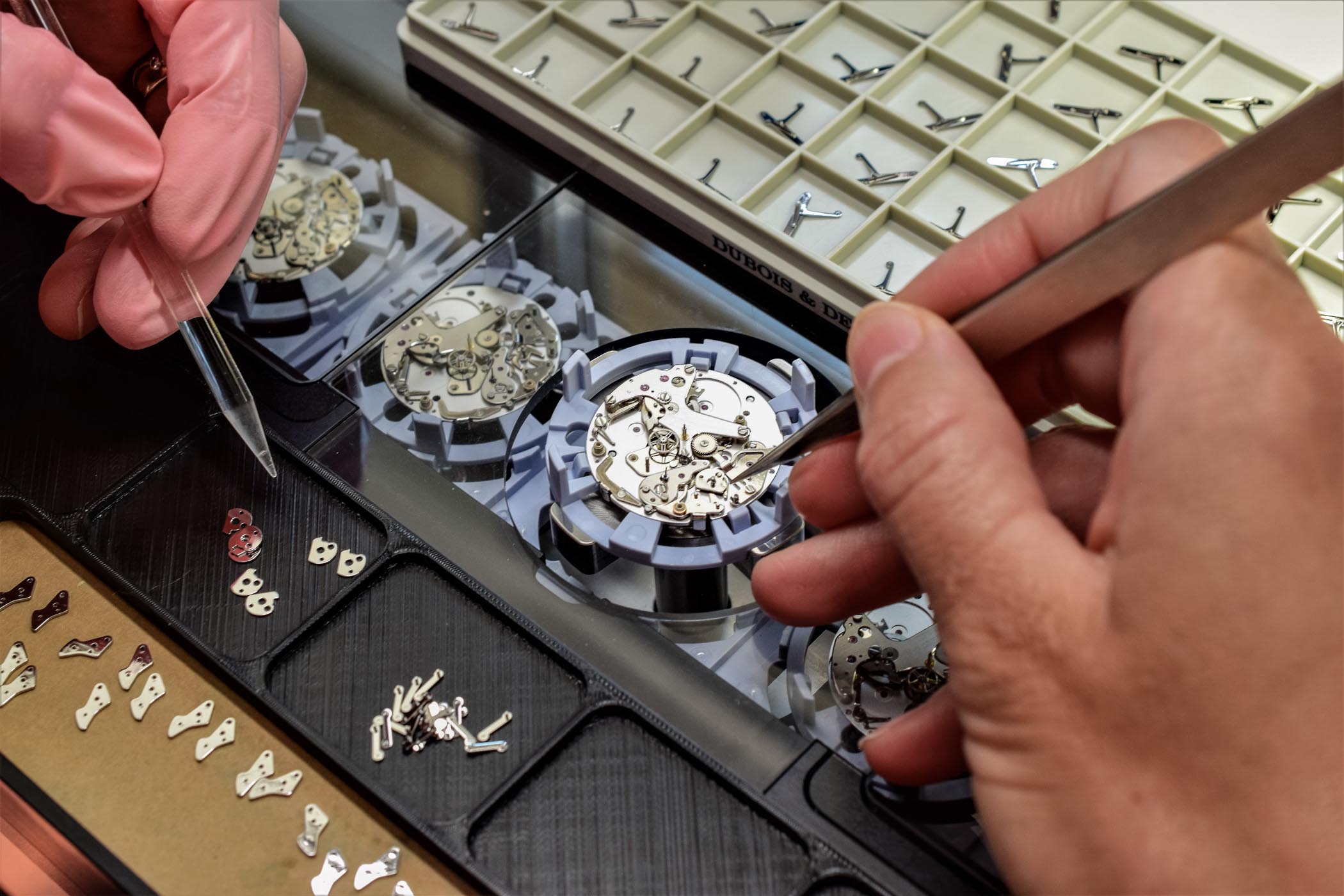
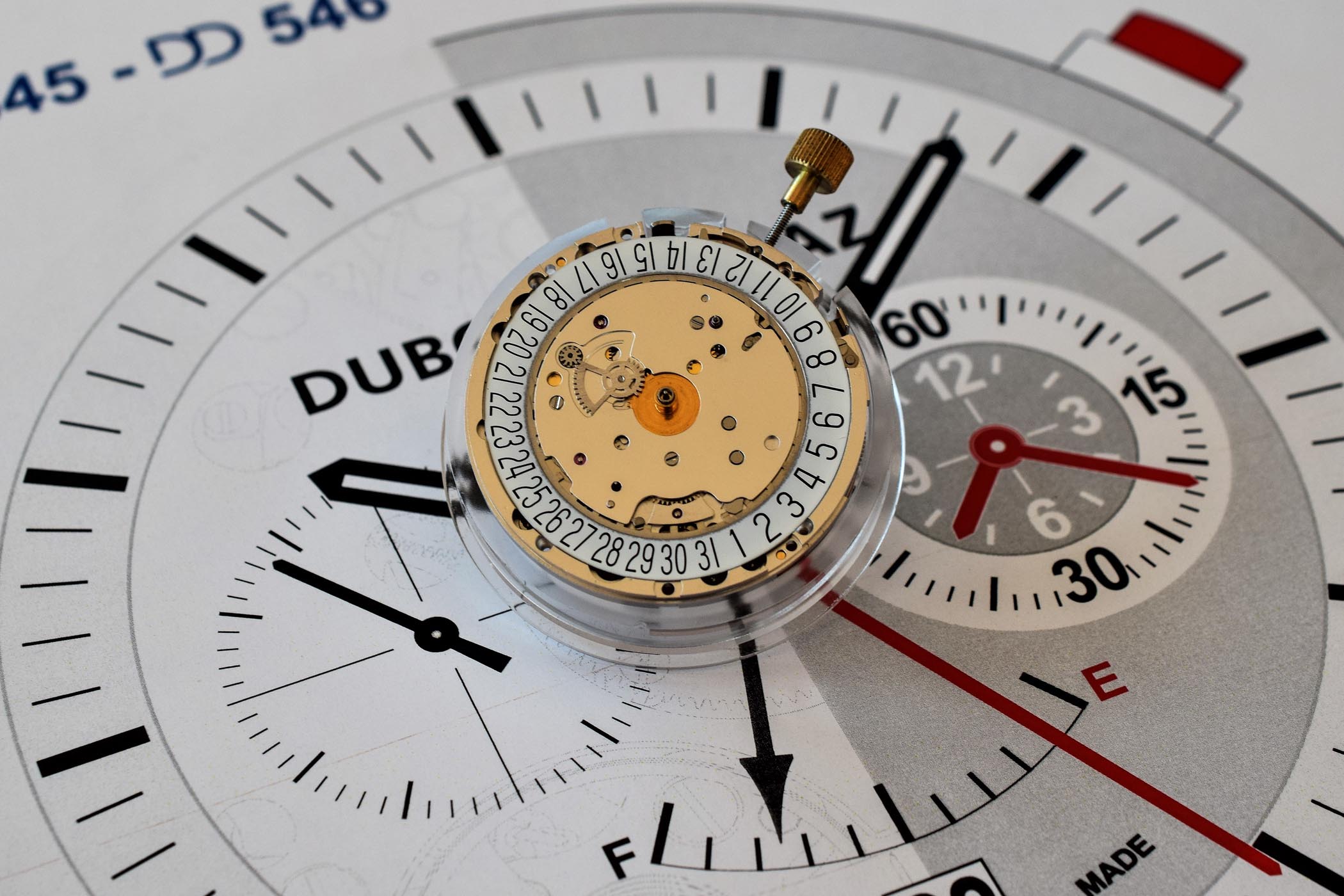
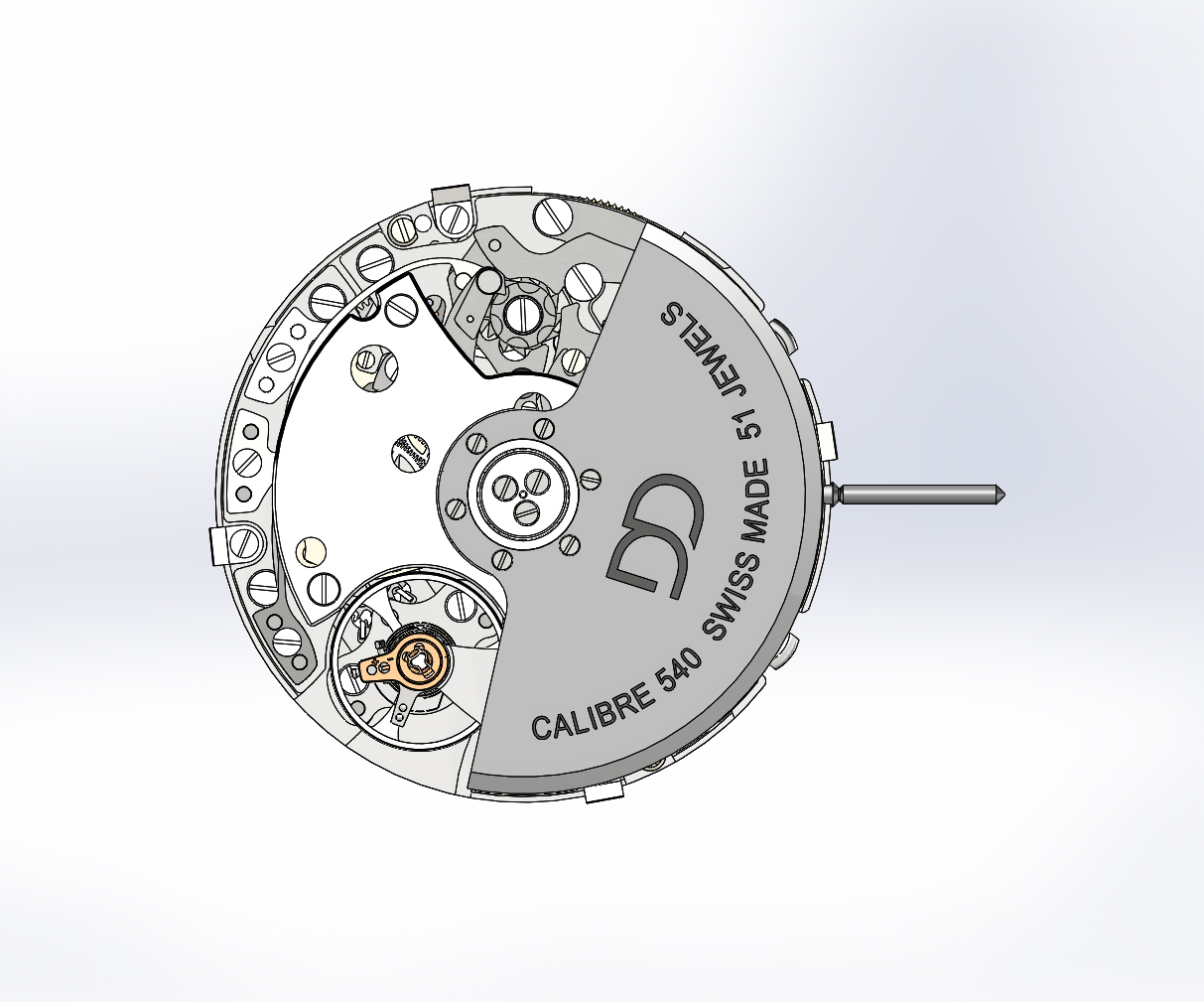
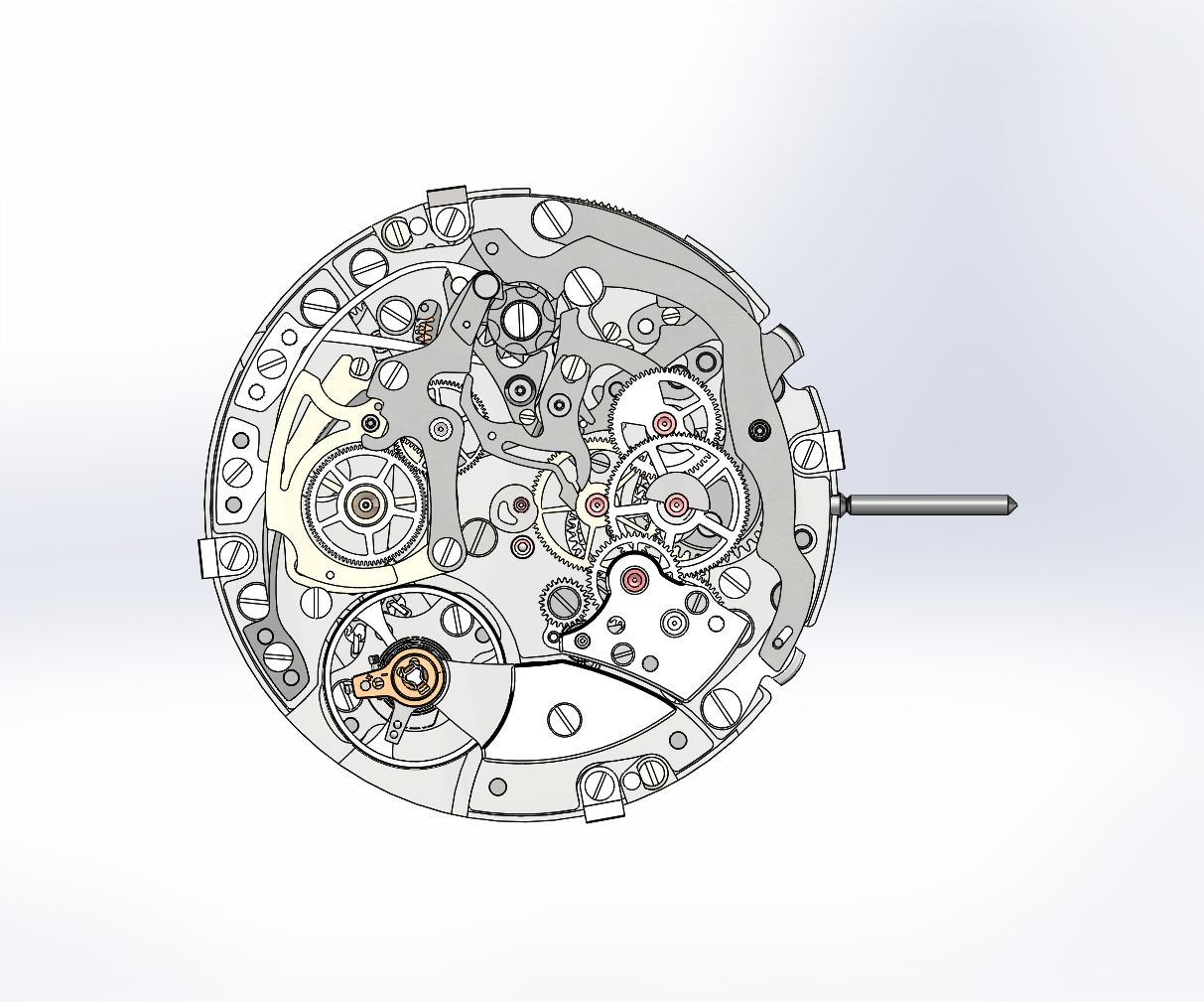



16 responses
Interesting! The world definitely needs a new decent auto chronograph movement to replace the ubiquitous and economy minded 7750. Aside from the Zenith EP and B01, there isn’t a whole lot of choice. The Daytona is unobtainable, Omega 9500 is too thick, and the 1185 is lovely but not especially durable.
It’s quite thin at 6.6mm (same as a Zenith EP), but I wonder about the high jewel count. Usually ~50 jewels in a chronograph implies that it is modular, as most integrated designs have far fewer.
I agree this is great news , finally an option besides the rugged but boring and common 7750 , hopefully this new movement is embraced by many brands instead of the 7750 , bring it on ….
From the illustrations it looks more like a modular design.
What’s the cost? Is it priced like a 7750? What is the alignment of the subdials?
@gohockey it will all depend on the industrial option DD will chose. So far it looks like it won’t compete with the 7750 but rather with the Vaucher chrono… The dial lay out can be seen under the first picture. Hours and minutes concentric at 3. But more options to be developed.
@chia-ming the renderings are the same side of the movement without rotor and bridges so the chronograph mechanism can be seen. So integrated indeed.
XM thanks for the article and response. So competing with VC = not for the affordable market but more upscale. IDK if anybody else has experience with the Seiko NE88 but I have 2 watches with it and find it to be a nice alternative to the 7750, especially because I prefer the 3-6-9 layout and the date is corrected by the crown and not a pusher like the 7753. It is also a column wheel.
“Interesting” comment from Philip B.
I think Bvlgari may object. The Octo Finissimo Chronograph GMT Automatic comes to mind – just off the cuff (apologies, weak pun, I know).
The Daytona is an epic piece, but a “thin” 40mm, borders on a diminutive watch – for me at least (with wrists like a Grizzly). As such I have not yet been obsessed with a Daytona.
With thickness 44mm, 9300/9900 Omega’s makes more coherent sense to me. I can imagine a thin, larger dia chrono may actually look odd (despite its technical prowess). I have a Speedy Pro and a new MKII (orange highlights – in my mind the most beautiful chrono I have). While both are firm favorites – they tend to look smallish.
My 48mm Breitling Navitimer fits the overall size of my biodegradable mass a bit better (btw – the opinion of others).
If you think a Daytona is only made from unabtanium – consider a Yacht Master II. Try one on before you cringe.
I do not know much about Eterna movements (perhaps because it is not main-stream news) – but there is the caliber 3916A.
Damasko also made a ‘new’ chronograph movement in (eg) the DC80, albeit a 7750 derivative, at least it looks different. Equally Sinn’s 140 series.
On the topic: 7750’s (alike and/or derivatives) are not bad. I have a Glycine Lagunare Big 9 that has soldiered on flawlessly for more than a decade – despite my best efforts to destroy it.
Spring Drive Chrono’s are “thick”, but really good and a conversation piece, among those in the know.
To me chronographs are by definition sport-watches (unless you plan to time your conversations at formal dinners). They can be- and perhaps should be larger and thicker.
Automatic chronograph movement designers- and makers, in my mind, should rather focus on efficiency (ie power reserve) and accuracy (both in time and time-keeping).
PS: Excuse my long rant – but I harbor a special affection (okay – obsession) for chronograph watches (of all kinds).
Part of my comment disappeared with ‘greater-than- and less-than’ signs. You may want to look at that Monochrome.
Thus meant to say: “With thickness less-than 15mm and diameter greater-than 44mm…”
So now my rant is even longer!
@Xavier It just looks like the chronograph parts are mounted upon a base movement, isn’t it? The Heuer cal.11 also looks the same.
@Chia-Ming Yang – the “3D” illustrations are showing the same side (“caseback” side) of the movement, with the second image showing the movement with the automatic system removed (rotor and top bridge). That’s not the dial side of the movement. This movement isn’t modular but indeed fully integrated. Hope this helps!
Correct me if I’m wrong, Chia-Ming, but I think a modular chronograph is attached and then connected via a pinion to the seconds wheel of the base movement (which is usually central, as can be seen on the Calibre 11) and the whole module is controlled from that point. The new DD 540 has no sign of this, and appears to have the chronograph function controlled by an independent wheel at another point, signifying an integrated calibre. I’m not entirely sure though!
Bit mystified as to why they didn’t stick with a more sturdy vertical clutch, especially as most of the calibre is bashfully concealed, negating the aesthetic advantage of a lateral one. *shrugs* They must have their reasons.
@Sieg
My list was far from exhaustive and you’ve mentioned a few excellent watches there (the Bvlgari or spring drive would be my picks). While our opinions regarding size clearly differ, it seems we both enjoy a good chronograph!
The industry seems obsessed with the 7750 and it’s derivatives and while yes it is a good, rugged, reliable movement, it is also kind of agricultural. It is also rather boring when almost every new chrono seems to use it. Im not sure why the Eterna calibre seems to be largely ignored by the industry as it seems to be a good alternative. I hope this new DD movement and the new Vaucher movement get some love.
@Brice I don’t think modular or not is determined by which side chronograph parts are. If so, the Heuer cal. 11 is also integrated, isn’t it?
@Gil How do you think about Lang&Heyne cal. IV?
That’s a good point – being designed like that specifically so ‘both the seconds counter and the minutes counter act from the center of the watch’.
And there’s others like that from Lange and Omega off the top of my head. I dunno then. I’m going to presume that for a modular chronograph to work it HAS to be operable from the centre to be compatible with the most common base movements, but certain integrated calibres may happen to share this central wheel placement despite being autonomous. An integrated chronograph can have a wheel at the centre, or not, but a modular absolutely has to have one. Would that be a right?
Someone help us out here. I’m grasping at wheels.
so… has this made it to any actual watch so far? it’s been two years, and the only “news” about this has been the recent deconstruction by Mr Speake.